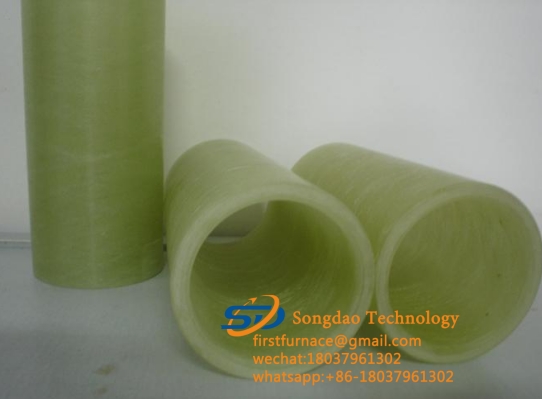- 08
- Feb
Tecnologia de Produção e Desenvolvimento e Aplicação de Tubo de Fibra de Vidro
Tecnologia de Produção e Desenvolvimento e Aplicação de Tubo de Fibra de Vidro
Existem três tipos principais de tubo de fibra de vidro production processes: reciprocating filament winding process, continuous filament winding process and centrifugal casting process.
Processo de enrolamento de filamentos alternativos (pertencente ao método de comprimento fixo): Neste processo, o tanque de imersão alterna com o mandril rotativo, e os filamentos de fibra de vidro longos são colocados em um certo ângulo oblíquo em relação ao eixo do mandril e o ângulo auxiliar (isto é, o ângulo de enrolamento) é controlado pela razão entre a velocidade de movimento do tanque de imersão e a velocidade de rotação do mandril, e o movimento de translação do tanque de imersão é controlado por controle eletromecânico computadorizado. O número de camadas de enrolamento é gradualmente aumentado até que a espessura de parede projetada seja alcançada. Após o enrolamento estar completo, a resina no artigo é substancialmente curada. Após a cura, o mandril é removido do tubo de fibra de vidro.
Continuous filament winding process (belonging to continuous method): The process is that the tube passes through a feeding station that supplies resin pre-impregnated roving, chopped glass fiber reinforced plastic fiber and resin sand mixture in motion, and the tube is continuously advancing in the core mold. made in.
Centrifugal casting process (belonging to the fixed-length method): In this process, the cut glass fiber reinforced material and sand are fed into a steel mold fixed on the bearing, and the unsaturated resin with catalyst is injected into one end of the steel mold to make the steel mold. It impregnates the reinforcing material. Under the action of centrifugal force, the resin replaces the air in the fibers and fillers, thereby producing a dense composite material without pores. Due to the action of centrifugal force, the inner wall of the tube forms a smooth and clean resin-rich inner surface layer. Cures at higher temperatures. The pipe made by this method is also called glass fiber reinforced plastic sand pipe.

